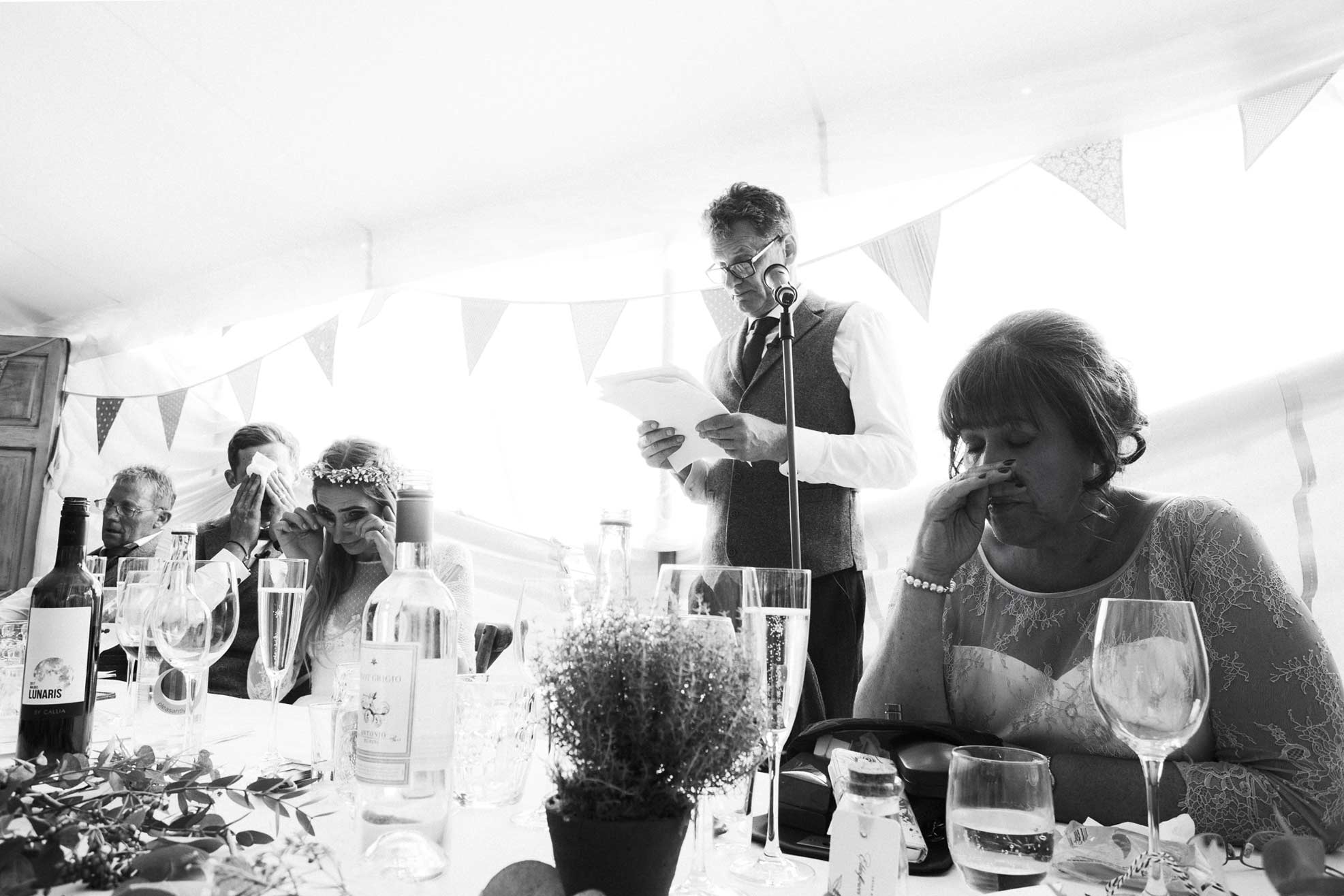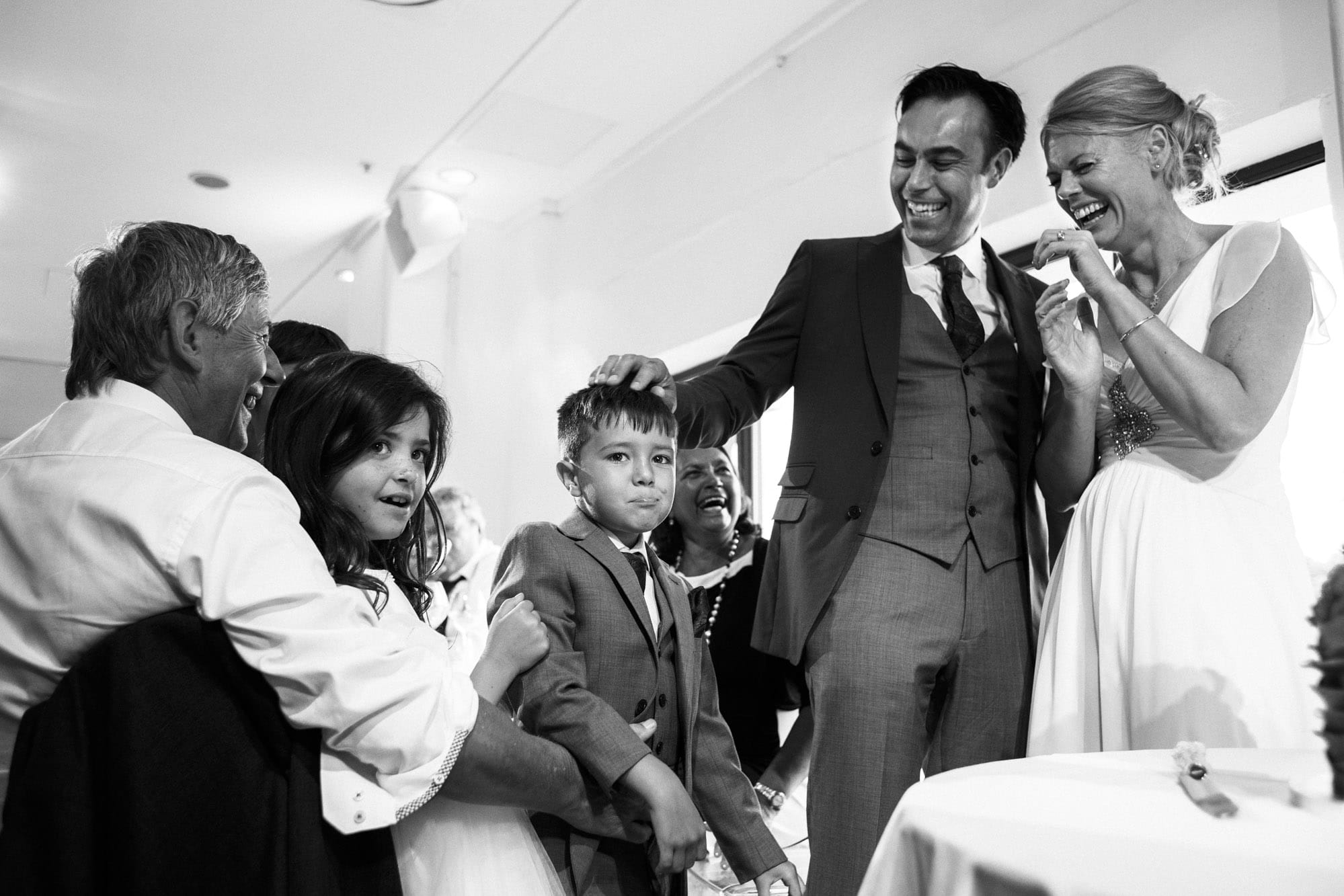What is the decisive moment? Typically in documentary photography, it is heralded as the moment in which composition, exposure and a moving element all come together in one fleeting moment, creating a flash of perfection, imperceptible to the naked eye. A moment in which all elements of the image harmonise and the universe is frozen in perpetual state of tension, drama and beauty. In good wedding photography this is particularly desirable as it gives the opportunity to capture family and friends in a scene that could never be choreographed. A scene that trounces any staged imaged and will likely be cherished for generations. If there is a single request that I receive most often, it is that couples no longer want formal group photographs as they record nothing of the personalities of the people within them.
The decisive moment offers something different, an alternative. These images in themselves only occur every so often, just like in street style photography. The likelihood that tens of family members will all be doing something in a moment that is significant is incredibly rare. However moments between groups of three and four people are much more common and should definitely be on every wedding photographers agenda to capture.
Henri Cartier-Bresson’s grasp on the decisive moment is so strong that if you Google ‘the decisive moment’ his biography appears in the rich snippet. His individual images are copied and reproduced in galleries and text books, endless essays compound their brilliance. Removed from the context and narrative from which that single image is produced, allows the image to be viewed solely in isolation and transcends itself. The skill of the photographer is exaggerated and the decisive moment only viewed in isolation. Cue the contact sheet.
I love contact sheets, the Magnum archive is a treasure trove for all photographers. Regardless of genre, from wedding to documentary, there is something for everyone. The beauty of the contact sheet is it makes the great photographers (and i sincerely mean great) mortal. There is nowhere to hide, mistakes, crop marks and failed compositions are plain for all to see. Pouring over contact sheets gave a massive boost to my confidence and my ability to comprehend the true meaning of the decisive moment. No longer was a single image the focus of my attention, tearing my hair out (which now there is none left) wondering how a single frame could be captured with such precision.
The contact sheets of contemporary wedding photographers will never see the light of day. It’s not uncommon to hear tales of taking four thousand images and delivering five hundred for example. On my personal journey, it was imperative to look past the single image and understand where the true skill in the decisive moment lies.
If we examine the following contact sheet, we are confronted with an iconic frame, a photograph seen by millions and now well established as part of the Bowie legacy.

In this scenario, we’re only interested in the surrounding frames. Why? Because it shows us that even the greats took average photographs. But secondly, that when you work through a moment, stick with an idea and let it play out, magic can happen.
This is imperative to understand when developing ones own work.
Firstly, never be bogged down by the great work of others, everyone makes bad work.
Secondly, keep your eye on the dream, not the competition.
Lastly, always shoot through a moment…

What I mean by this last point is that you can only make considerations for what you are genuinely in control of. The lighting, the overall composition of the scene, depth of field and any rendering of movement. The rest is pure chance and relies hugely on clients willing to be vulnerable.
With the above image, I took about eight frames in very quick succession, in the other seven people have their faces covered by napkins or obscured by bottles or have unflattering expressions. In this one image alone, everyone is exactly where they need to be.
What one has to be able to do is place themselves in a position where the action will happen. The moment itself can only appear when you’re there to capture it. Importantly, whilst the moment is unfolding, continue to take photographs until the moment is over.
In exactly the same fashion as the greats of photography, shooting through a moment is essential to plucking that ‘pregnant moment’ out of the inevitable passing of time and preserving it forever. On my personal journey, the uncovering of shooting through a moment changed my work dramatically. No longer was I trying to achieve the impossible, taking one frame at exactly the right time.
Instead taking control of all the elements that I could and then taking three, five, sometimes more images in a row to capture the perfect shot. This has to be placed into context, I’m not advocating shooting at twelve frames per second all day long – otherwise you may as well be a videographer. However taking multiple frames should not be sneered at as a sign of being ‘amateurish’.
It is important for me to always come back to the fact that I am creating a product for a client. Like any client, they aren’t going to care if I take a thousand images of one moment, as long as I deliver the goods they will be none the wiser but all the happier. I’d much rather that scenario than trying to explain that I missed the key moment because I was paying homage to a higher art.
Take the following sequence for example. There is a certain beauty to the way in which the moment unfolds. Each image is good, smiles are abundant, the use of hands add interest and makes the image dynamic. But there! Just there! That’s the moment. The universe aligns, three generations of family faces are visible, all laughing. Physical interaction, gesticulation, it’s all there.

Sometimes you get lucky, others, the moment never materialises. But when it does, it does make my heart sing a little bit. That fleeting moment of harmony – I think it resonates with me because it encapsulates the moments that we live for in general. The subtle gestures of day to day kindness or a fleeting glance from your partner. All of these little things that make life great. When you capture it in an image, it’s pure magic.
